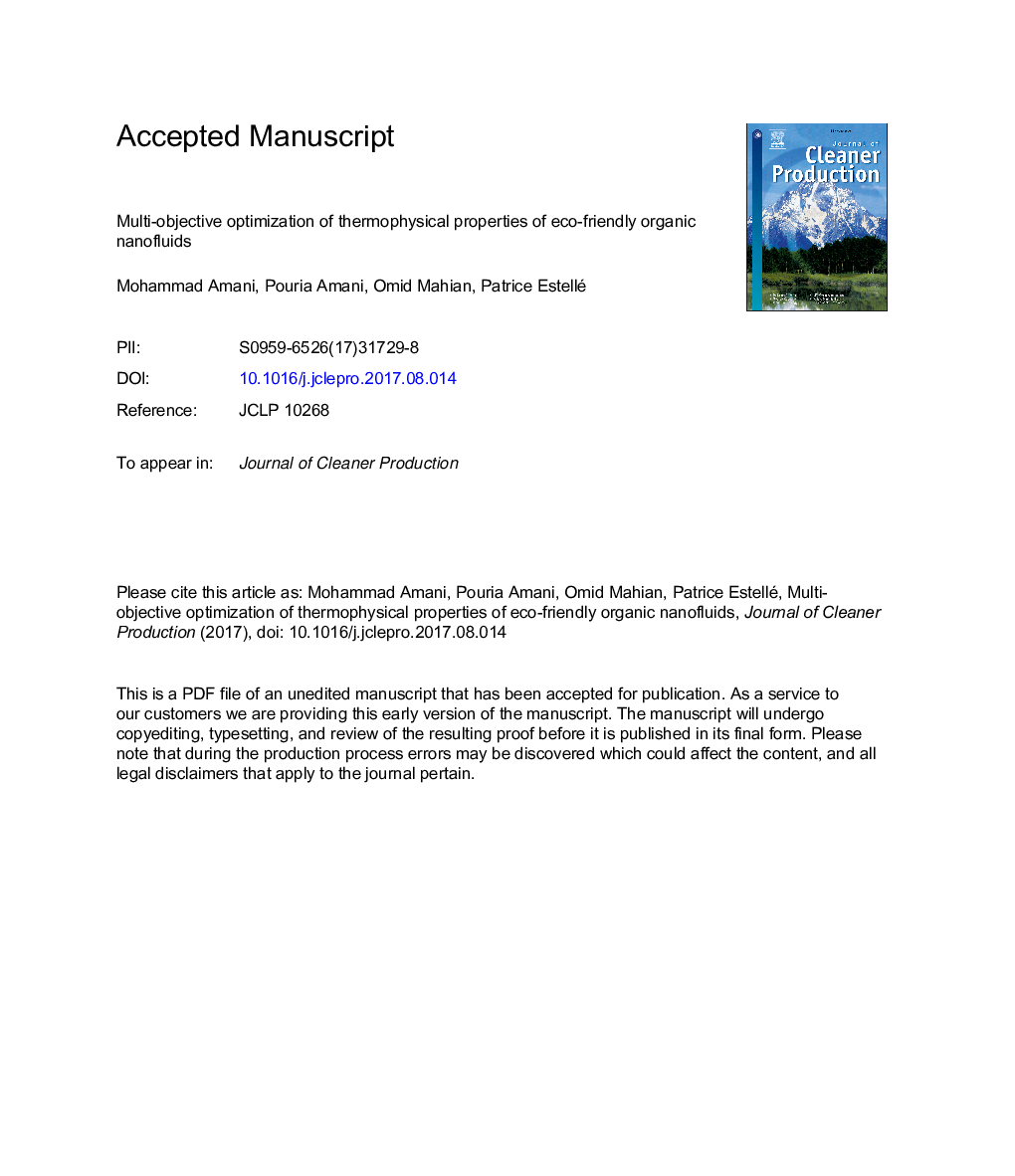| کد مقاله | کد نشریه | سال انتشار | مقاله انگلیسی | نسخه تمام متن |
|---|---|---|---|---|
| 5479911 | 1522088 | 2017 | 35 صفحه PDF | دانلود رایگان |
عنوان انگلیسی مقاله ISI
Multi-objective optimization of thermophysical properties of eco-friendly organic nanofluids
ترجمه فارسی عنوان
بهینه سازی چند هدف از خواص ترموفیزیکی نانوفیلد های آلی سازگار با محیط زیست
دانلود مقاله + سفارش ترجمه
دانلود مقاله ISI انگلیسی
رایگان برای ایرانیان
کلمات کلیدی
موضوعات مرتبط
مهندسی و علوم پایه
مهندسی انرژی
انرژی های تجدید پذیر، توسعه پایدار و محیط زیست
چکیده انگلیسی
The costly and time-consuming determination of thermophysical properties of nanofluids through the experimental analysis leads the current investigations to use the soft computing methods like correlating, artificial neural network (ANN) and genetic algorithm. In this study, the application of ANN, empirical correlations and genetic algorithm for modeling and multi-criteria optimization of the thermophysical properties of clove-treated MWCNTs nanofluid which has been synthesized through a facile and eco-friendly procedure has been investigated. In this contribution, totally 6 structures are assessed: networks including one and two hidden layers with 2, 4, and 6 neurons. From assessment of the ANN, it is found that the network including two hidden layers with 4 neurons in every layer results in the least difference between the network outputs and the experimental data, providing the best performance. It is concluded that the optimal ANN model is a more precise and accurate way to predict the thermal conductivity and viscosity of environmentally friendly C-MWCNT/water nanofluid compared to empirical correlations obtained from non-linear regression method. Moreover, the evolutionary algorithm has been implemented for achieving the optimal conditions to maximize the thermal conductivity and to minimize the viscosity of nanofluid. In this regard, based on real-world engineering experience, the final optimal solutions opted from several distinguished procedures of decision-making including the Bellman-Zadeh, TOPSIS and LINMAP approaches has been investigated in parallel. The results of this study revealed that the obtained outputs using TOPSIS and LINMAP procedures are the closest to ideal solution.
ناشر
Database: Elsevier - ScienceDirect (ساینس دایرکت)
Journal: Journal of Cleaner Production - Volume 166, 10 November 2017, Pages 350-359
Journal: Journal of Cleaner Production - Volume 166, 10 November 2017, Pages 350-359
نویسندگان
Mohammad Amani, Pouria Amani, Omid Mahian, Patrice Estellé,
